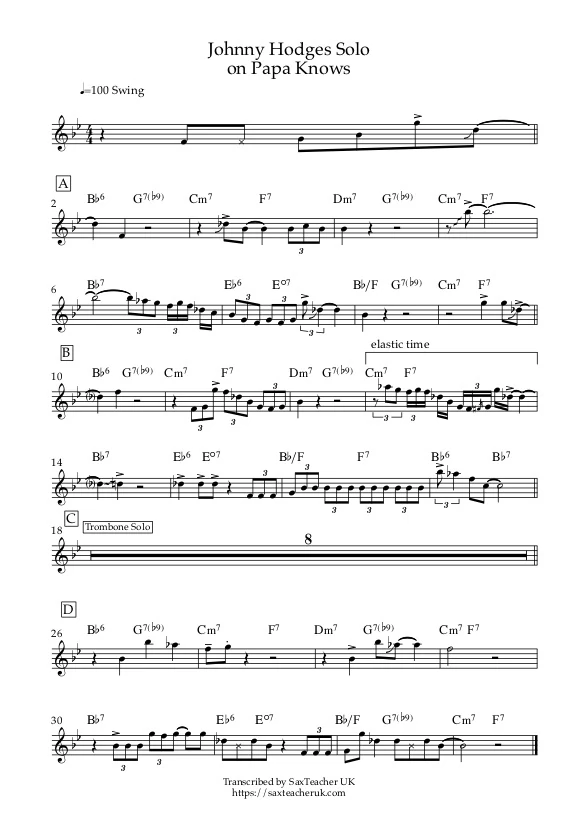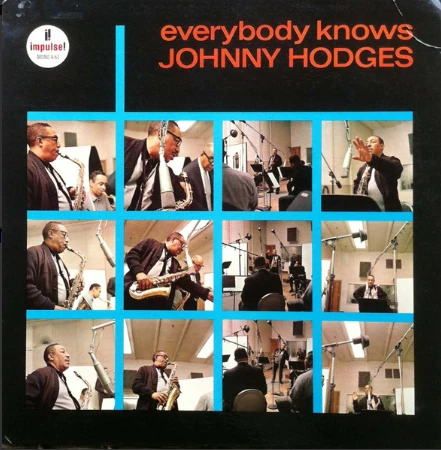Johnny Hodges
Papa Knows Transcription
Transcriptions Home > Transcription

Listen to the recording with the score on Youtube
Download full transcription transposed for Alto Saxophone
On to a new saxophonist for the next few transcriptions! This time it's Johnny Hodges playing 'Papa Knows,' a down-home tempo rhythm changes with the bridge from Duke Ellington's 'Solitude.' Download your free PDF of the sheet music today and start studying this great solo from the album 'Everybody Knows'.
Johnny Hodges' Playing Style
The great Johnny Hodges is one of the most overlooked geniuses of the saxophone when it comes to study. While most players acknowledge the importance of Johnny Hodges' contribution to the history of the music, far fewer have taken the time to study and fully appreciate the range and breadth of his playing. He played with a gentle stillness that belied his immense expressive power. His use of glissandos, breath attack, various articulations and above all DYNAMICS stand out from all others.
These assets should be studied and copied until you absorb them - they can enrich melodic and improvised lines of any style and complexity. Modern jazz vocabulary has largely overlooked this kind of expression. No matter how rhythmically or harmonically complex, an improvised solo needs a tasteful build and direction and emotive control. Johnny Hodges had these strengths like nobody else.
Johnny Hodges Vocabulary
Pentatonic
This solo perfectly outlines the chordal harmony of rhythm changes by using only a handful of notes. Founded on the major pentatonic scale of Bb major, Hodges plays around with the relationship between the flattend 3rd and major 3th to give colour and variation. He also makes use of the flattened 7th where appropriate, eg in the Bb7 bars, adding extra colour and movement to the melody.
Accents
This is really tough tempo to play - the triplets are really important and too much double time sounds boring. Hodges alternates between quavers and triplets only. At this slow swing speed, most players would be unable to sustain interest. In this solo Hodges uses accents and breath attack to create peak points and give the impression of sudden twists and turns. This technique was expanded and developed by Charlie Parker in the 1940s and 50s.
Dynamics
SO much subtlety and range of expression in this solo, it is impossible to write down. Rather than using note density to generate movement, Hodges does it with crescendos and sudden dynamic contrasts. Some notes are whisper quiet and some are thunderously loud, sometimes in the space of a bar. Copy this expression until you can mimic it exactly. Remember if you can swing hard at a whisper, the loud volumes will take care of themselves!
Free PDF Downloads
Download Full Transcription for Alto Saxophone
Get Personalised Practice Advice
Want to know the best way to practise this transcription, or any transcription you are working on? Save time and practise more effectively? Find out more about Saxophone Lessons on our dedicated page, or click the link below if you're ready to get in touch about saxophone lessons!
Are you interested in learning to play like Johnny Hodges?
'It Was A Sound' is a book of 12 original compositions based on the playing style of Hodges for the beginner and intermediate player. It also features a biography of Hodges in 12 chapters. Discover the greatness of Hodges:
